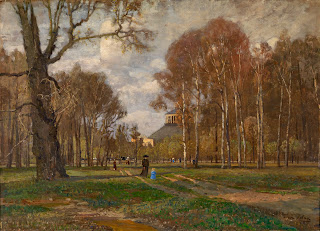In 1793, at the age of 23, Beethoven left Bonn to settle definitively in Vienna with the desire to expand his knowledge under the guidance of the most conspicuous masters of the time. Among them stood out Joseph Haydn who, passing through Bonn, had offered to accept the young genius as a pupil in the capital of the empire if he ever happened to be there.
Haydn's pupil
But the Esterházy musician and Beethoven did not get along. Their temperaments were completely opposite. The old master acknowledged that the young Beethoven had genius, but suggested that perhaps he could do better with an education of the spirit than a musical one. On hearing his first works, he would have said to him:
"You are very talented, and will progress further in the future. You possess great inspiration and will never sacrifice a beautiful thought to a tyrannical rule, which seems reasonable to me; but you will sacrifice rules to your fantasy, for it seems to me that you are a man who has several heads, several hearts, several souls. I believe that one will always discover in your works something unexpected, unusual, somber, because you yourself are a little somber and strange, and the musician's style always reveals the man."
A cold, if sharp analysis of Beethoven's personality. In the face of Haydn's simplicity, Beethoven's passionate and sometimes violent temperament was bound to clash. The young composer was then forced to look for other teachers. He had several (Salieri, among them), although later, when asked from what sources he had drawn, he used to answer, a little proudly: "I am a pupil of Socrates and Jesus Christ".
Sonata Opus 2 No 1
However, the first three piano sonatas, grouped in Opus 2, are dedicated to the first teacher he had in Vienna, Joseph Haydn.
And with them, the surprising cycle of the 32 piano sonatas that he would write during his lifetime is inaugurated.
And with them, the surprising cycle of the 32 piano sonatas that he would write during his lifetime is inaugurated.
Published in 1796, Sonata No. 1 of Opus 2, in F minor, was probably composed years earlier, while the master was still in Bonn. It is clearly an early piece, influenced – and somewhat more – by Mozart and Haydn. It is his first piano sonata.
Movements
In the complete cycle of his 32 sonatas, Beethoven did not always follow the Vivaldian three-movement structure. There are those with four movements (12 sonatas), three (13) and with two (7). It is therefore not surprising that this first sonata is in four movements:
00 Allegro - The opening theme is apparently taken from the finale of Mozart's Symphony No. 40.
04:18 Adagio - The first theme is derived from the slow movement of a quartet, by Beethoven himself.
09:54 Menuetto: Allegretto - This is the movement that Beethoven has added to the Vivaldian structure, a minuet marked allegretto.
13:41 Prestissimo - With a very energetic initial theme, it clearly marks the movement as the most "Beethovenian" of all.
The rendition is by Daniel Barenboim, during his performance of the complete Beethoven sonatas at the Berlin Staatsoper in June and July 2006.


No comments :
Post a Comment